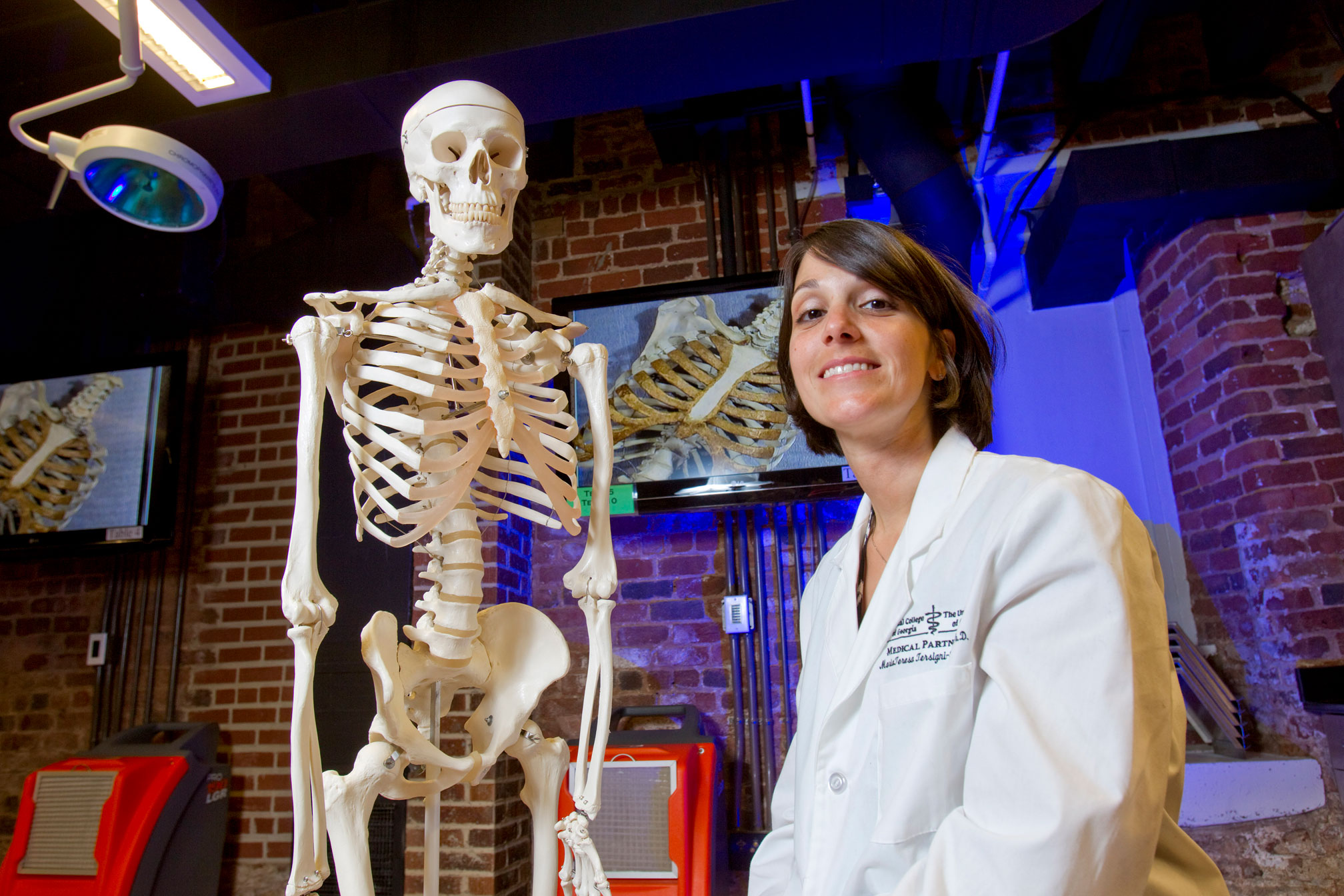MariaTeresa Tersigni-Tarrant’s job is not for the faint of heart.
As a forensic anthropologist, she helps solve cases with a decomposing body or skeletal remains and examines the manner—not the cause—of death.
And the Michigan native, who teaches gross anatomy and embryology at the Georgia Health Sciences University/University of Georgia Medical Partnership, can hardly imagine doing anything else. Tersigni-Tarrant approaches nonliving human bodies with serene respect and detective-like enthusiasm. Her attitude is probably quite comforting to first-year medical students tasked with logging 45 hours in her cadaver lab.
“I tell the students it’s very normal to feel really uncomfortable at first,” she said.
Forensic anthropology developed out of a need for science in legal situations involving death; it combines the sub-disciplines of physical anthropology and human osteology.
The popular television show Bones put the relatively obscure specialty on the map—and in the minds of undergraduate students who packed Tersigni-Tarrant’s fall 2010 “Introduction to Forensic Anthropology” course. She teaches the class every other year to fulfill her joint appointment as an adjunct professor in the Franklin College of Arts and Sciences.
Her take-home message for aspiring forensic anthropologists: Be prepared to work in academia. Full-time forensic anthropologist jobs are rare, though television stars lead fans to think otherwise.
Tersigni-Tarrant herself practices her craft in brief intervals away from the university campus. Since 2009, she has consulted with the Georgia Bureau of Investigation on 41 cases. Only a handful of cases require Tersigni-Tarrant to go to the scene of a crime. More often, she drives to the GBI headquarters in Decatur to help with a decomposed or skeletonized body. A full examination can last between one and three days, depending on the body’s condition.
“If I have an entire skeleton, I can make a good estimation of age, sex, stature (height) and ancestry,” Tersigni-Tarrant said. “There is a lot of science involved.”
The information helps her create a biological profile used to understand who a person was. She also may perform a trauma analysis to shed light on the circumstances of the death. The medical professor laughed as she remembered devouring any Nancy Drew or Hardy Boys whodunit as a kid. Real life cases, by contrast, can be emotionally draining.
Tersigni-Tarrant approaches skeletonized remains as a scientist in any field might—by following a specific, tested process. Her ultimate goal is “to do everything I can to get a person identified and back with (his or her) family. I don’t like knowing that somebody’s still looking and I could do something about it.”
Soldiers’ families benefited from her skills during a post-doctorate fellowship she completed in 2005 at the Joint POW-MIA Accounting Command on Hickam Air Force Base in Hawaii. Tersigni-Tarrant created a new protocol there to help researchers differentiate animal and human bone fragments found in Southeast Asia on old aircraft crash sites. The new guidelines meant that the pieces were examined at the command center’s laboratory first before deciding whether to ship them to Washington, D.C., for DNA analysis. This procedure saved time and money for the researchers.
After her post-doc, Tersigni-Tarrant settled back into her other passion: teaching. Before coming to the Medical Partnership, she taught anatomy at the Philadelphia College of Osteopathic Medicine in Suwanee. The faculty position at the Medical Partnership gave her an opportunity to teach anthropology courses again and to be part of a medical school curriculum that emphasizes small-group learning.
“I love teaching what I’m passionate about,” she said. “I love watching students come up with the ‘a-ha’ moment, and say ‘Man, I get it!’ ”


